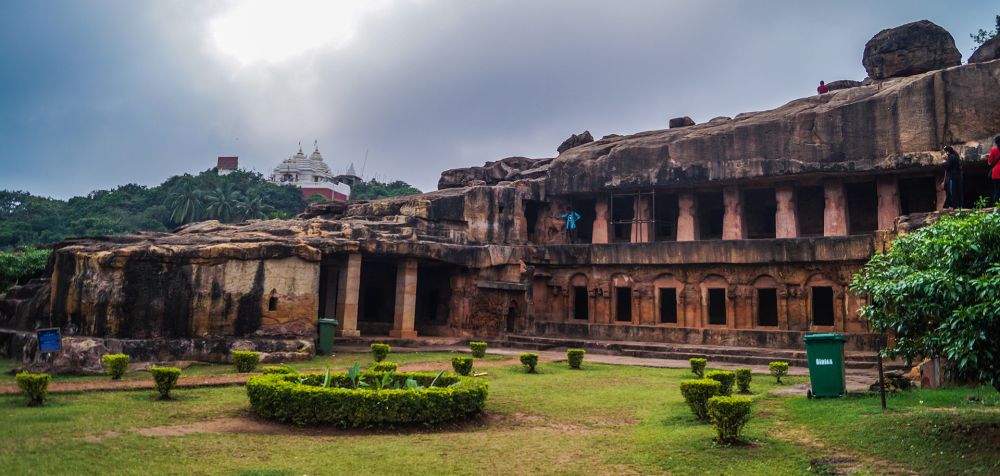

The Udayagiri and Khandagiri Caves, located near Bhubaneswar, the capital city of Odisha, India, are regarded as significant historical and religious sites. They represent some of the earliest Jain rock-cut shelters, carved out mostly during the reign of King Kharavela around the first century BCE. These caves are situated in the Eastern Ghats and are renowned for their exquisite carvings, religious significance, and historical inscriptions.
The historical importance of the Udayagiri and Khandagiri Caves lies in their connection with the Jain heritage and the reign of the mighty Jaina king, Kharavela. The caves are more than just ancient shelters; they contain numerous inscriptions that reveal substantial information about the social, political, and cultural fabric of the time. The Hathigumpha inscription, found on the walls of the Hathigumpha cave in Udayagiri, provides a detailed account of King Kharavela's life and his conquests.
Recognizing their importance, these caves were brought under the Archaeological Survey of India's protection, which led to their popularity among both domestic and international visitors. Since the 19th century, when the archaeological significance of the site was first documented, tourism in the Udayagiri and Khandagiri Caves has gradually increased, attracting historians, researchers, and casual tourists alike.
The Udayagiri and Khandagiri Caves showcase a series of intricately carved rock-cut chambers, which served as the dwelling retreat for Jain monks. Udayagiri, which means "Sunrise Hill," has 18 caves, whereas Khandagiri, or "Broken Hill," has 15 caves. The caves are adorned with beautiful carvings, reliefs, and sculptures that depict the life of Tirthankaras (Jain spiritual teachers) and various social scenes from that era.
The improvement of transportation facilities and the systemic development of tourism infrastructure in the surrounding regions have made the Udayagiri and Khandagiri Caves easily accessible for tourists. Today, the caves are a part of Odisha's popular "Golden Triangle," along with the cities of Puri and Konark, which boosts their tourism potential significantly.
In recent years, there has been an emphasis on preserving the historical legacy while promoting sustainable tourism practices in the area. Tourists are now provided with better amenities, including guided tours, education on the site's history, and cultural events that showcase local art and traditions. Augmented reality apps and virtual tours have also made their way into the visitor experience, offering a tech-savvy way to delve into the historical context of the caves.
The caves are not only a testament to ancient practices and architectural expertise but also offer a serene environment for visitors to explore and contemplate. The natural surroundings, including the verdant hillocks and the tranquility of the place, add to its charm, making a trip to the Udayagiri and Khandagiri Caves a holistic experience.
Overall, the Udayagiri and Khandagiri Caves remain one of the most fascinating historical sites in India. Their contribution to the Indian tourism sector has been integral, reflecting the country's commitment to preserving its ancient monuments and cultural heritage. With each passing year, they continue to draw thousands of visitors who leave with a deeper appreciation of India's history and religious diversity.